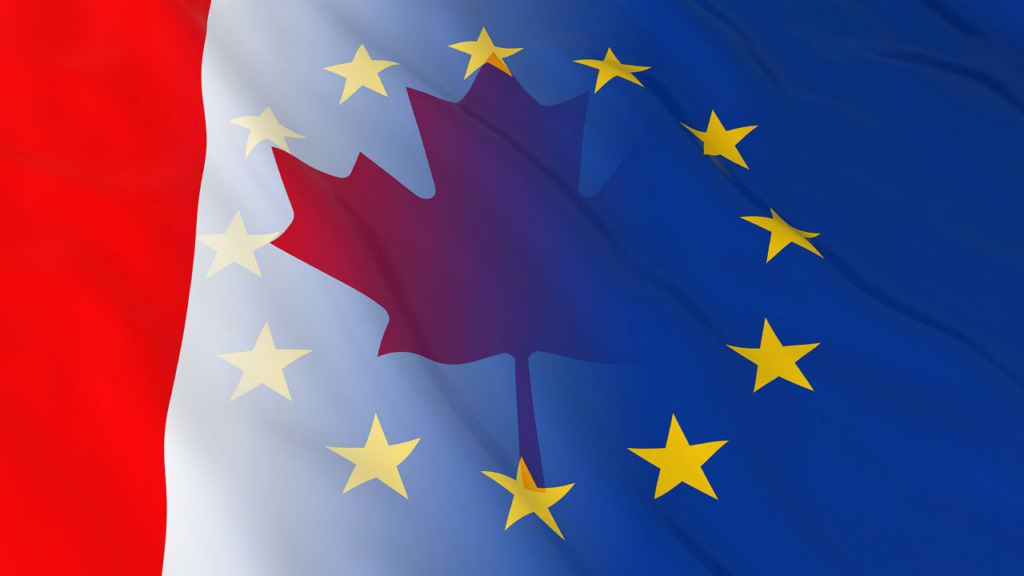A Strategic Pivot
As of March 24, 2025, there are growing indications that Canada is exploring new military security and defense contracts with the European Union (EU). This potential shift comes amid evolving geopolitical challenges, and Canada’s desire to diversify its defense procurement sources. With increasing tension between the U.S. and Canada under recent administrations, Canada is seeking to reduce its reliance on American military equipment. Instead, the country looks to strengthen its own defense manufacturing capabilities and expand its role in global security.

Canada’s Strategic Shift Towards EU Defense
Reports suggest that Canada is engaged in advanced discussions with the EU about its defense industry initiatives. The focus of these talks is to explore the possibility of Canadian manufacturers participating in EU defense contracts. By joining these efforts, Canada aims to enhance its defense capabilities while benefiting from an integrated supply chain that could eventually include fighter jets, submarines, tanks, and other advanced military systems.
This move could involve Canadian industries gaining access to contracts for producing cutting-edge technologies, such as the Saab Gripen fighter jet, submarines, and a range of military aircraft. The EU’s Readiness 2030 strategy, unveiled in early 2025, outlines plans to boost European military production and capabilities. This strategy aligns with Canada’s growing interest in diversifying its procurement sources and strengthening its position in global defense markets.
Strengthening Canada’s Defense Capabilities
Canada is uniquely positioned to play a key role in the evolving defense landscape, given its technological expertise and resources. The country has significant reserves of rare earth minerals, which are vital for producing advanced military technologies, such as drones, satellite communications, and cybersecurity systems. These areas of expertise could be crucial in the EU’s efforts to strengthen its military production capacity, particularly as the EU seeks to reduce its dependence on foreign suppliers.
Canada’s defense manufacturers are also well-equipped to contribute to the development of robotics and other high-tech military systems. These capabilities, combined with its resource base, make Canada an appealing partner for the EU’s defense industry. In turn, this partnership could allow Canada to tap into new markets, gain access to advanced military technologies, and strengthen its defense sector.
Geopolitical Dynamics Behind the Shift
The shift towards deeper defense ties with the EU is also influenced by broader geopolitical factors. In recent years, tensions between the U.S. and Canada have increased, partly due to differing policies and priorities under recent U.S. administrations. While Canada has long relied on the U.S. for military equipment and security partnerships, the evolving global landscape has made it clear that diversification is essential for long-term security.
Canada’s relationship with the U.S. has faced challenges in areas such as trade, environmental policies, and defense priorities. As a result, Canada is looking to build stronger relationships with other global powers, including the EU. By engaging in defense cooperation with the EU, Canada seeks to ensure its own security while reducing its dependence on a single partner.

The EU’s Readiness 2030 Strategy and Its Role in Canada’s Plans
The EU’s Readiness 2030 strategy, introduced in March 2025, is a significant component of Canada’s potential shift toward closer military ties with the EU. The strategy emphasizes the need for increased military production within the EU, which includes building new defense capabilities and strengthening existing ones. The strategy aims to make Europe more self-reliant in terms of defense technologies, reducing its dependence on external suppliers.
Canada’s involvement in this strategy would align with the EU’s goal of bolstering its defense industry. Joint procurement and production initiatives could provide Canada with access to high-tech military equipment while contributing to European defense goals. This partnership could also enable Canada to enhance its domestic defense manufacturing capabilities, particularly in high-demand areas such as cybersecurity and robotics.
Potential Benefits and Challenges
Canada’s pivot towards the EU could offer numerous benefits. For one, the country could strengthen its defense industry and manufacturing capabilities, creating new opportunities for Canadian companies. Additionally, the partnership would allow Canada to access the EU’s advanced defense technologies, helping to modernize its military forces and capabilities.
However, the move also presents challenges. The details of potential contracts and agreements are still under negotiation. As of March 2025, no final agreements have been signed, and specifics such as timelines and contract values remain unclear. There are also potential hurdles in terms of integrating Canadian industries into the EU’s defense supply chain and ensuring that both parties align on defense priorities.
Looking Ahead: Canada’s Military Future
While no official announcements have been made regarding signed agreements, discussions between Canada and the EU signal a significant shift in Canada’s defense strategy. As Canada seeks to reduce its reliance on the U.S. and diversify its procurement sources, this partnership with the EU could play a key role in enhancing the country’s military capabilities and strategic positioning on the global stage.
In the coming months, further developments are expected as the talks continue. Whether Canada will move forward with signing defense contracts with the EU remains to be seen, but the potential benefits of such a partnership could be profound for both sides. As the geopolitical landscape continues to evolve, Canada’s role in global defense may become more prominent, particularly as it strengthens ties with the EU and bolsters its own military manufacturing capabilities.
35,204 hits




